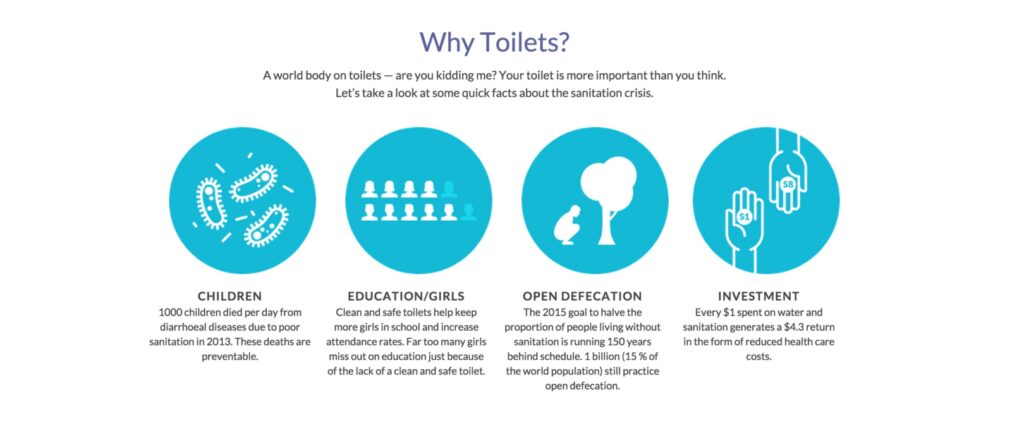Water and sanitation remain issue in Asia with more than 140 million people still have no easy access to improved sanitation. Many are still defecate in the open.
We use them every day – at home, school, work, restaurants, shopping malls – yet we seldom talk about them. The silence around the issue of toilets and sanitation has deadly consequences.
The problems are daunting. Not only in the rural, urban areas face many challenges because of booming population growth. Infrastructure is often inadequate, resulting in such problems as the spread of disease from poor sanitation, and the loss of surrounding forests due to high demand for affordable cooking fuel.
Global Sanitation Crisis
A lack of clean and safe access to toilet, water, and sanitation have direct impact to health, human dignity and well being.
A few years ago the World Bank estimated that inadequate water supply and sanitation drains $260 billion every year from the global economy due to lost time and productivity. A lack of clean and safe toilets at schools leads to higher dropout among girls once they reach puberty. Diarrhoeal diseases – a direct consequence of poor sanitation – kill more children every year than AIDS, malaria and measles combined.
Clean and safe toilet ensures health, dignity and well-being. The toilet issue is not a small issue. Its is, indeed, an important part of civilised construction in both urban and rural areas. Addressing the sanitation crisis would boost livelihoods, public health, and ultimately trade and investment.
World Toilet Day 2020
On 19 November 2001, the NGO World Toilet Organization (WTO) was founded by Jack Sim, a philanthropist from Singapore. He subsequently declared 19 November as World Toilet Day.
World Toilet Organization is one of the few organisations whose sole focus is on toilets and sanitation, breaking the silence on the sanitation crisis is at the heart of what they do. This aligns with Sustainable Development Goal #6 calls for universal access to adequate and equitable sanitation and the end of open defecation by 2030.
Why Sanitations is more than Just Toilet ?
The solution to the water, sanitation and toilet in Asia requires more than infrastructure and technology implementation. It also requires social acceptance, economic affordability, maintenance issue and gender considerations.
World Toilet Day should not only served as a stark reminder of the gravity of the sanitation challenge, but also as a challenge for all of us to work together towards achieving a safer, healthier, more prosperous, and more sustainable world through improved global sanitation.
Also Read :
Global Handwashing Day : Water and Soap for Everyone Everywhere



